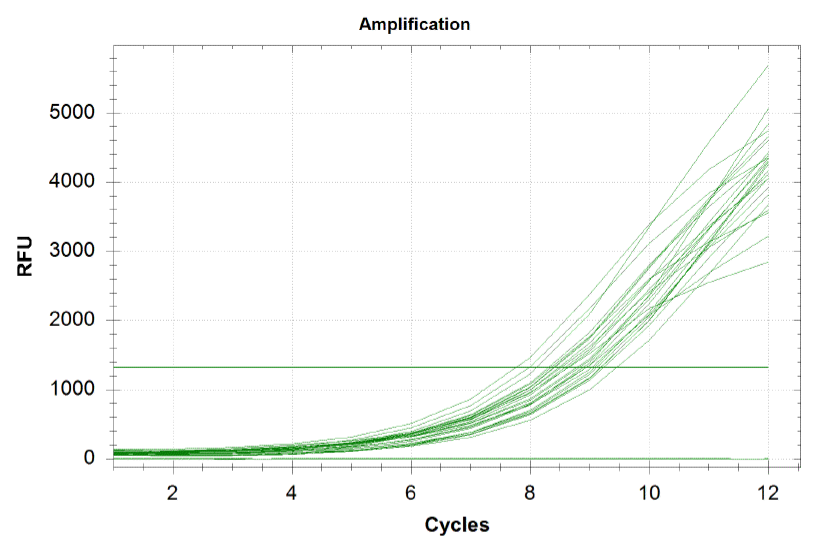Team:Harvard/Results/Chip Synthesis
From 2011.igem.org
(Difference between revisions)
Nidanaushad (Talk | contribs) |
Nidanaushad (Talk | contribs) (→qPCR curves) |
||
| Line 7: | Line 7: | ||
When performing a qPCR, one wants to run the reaction while the growth is still exponential. During this phase, all the oligos are replicated at equal rates. Once growth levels off, the reaction should be stopped as the oligos are now being replicated unequally. Each of the graphs below represents a qPCR for one of our sub-pools. | When performing a qPCR, one wants to run the reaction while the growth is still exponential. During this phase, all the oligos are replicated at equal rates. Once growth levels off, the reaction should be stopped as the oligos are now being replicated unequally. Each of the graphs below represents a qPCR for one of our sub-pools. | ||
| + | [[File:HARVQpcr.png|center|500 px]] | ||
</div> | </div> | ||
<div class="whitebox"> | <div class="whitebox"> | ||
| + | |||
=Sequencing results of Library transformation= | =Sequencing results of Library transformation= | ||
==Error rates== | ==Error rates== | ||
Revision as of 18:50, 28 September 2011
qPCR curves
When performing a qPCR, one wants to run the reaction while the growth is still exponential. During this phase, all the oligos are replicated at equal rates. Once growth levels off, the reaction should be stopped as the oligos are now being replicated unequally. Each of the graphs below represents a qPCR for one of our sub-pools.
Sequencing results of Library transformation
Error rates
Still being updated
- Good: 57.8% (22/38)
- Single SNP: 5.3% (2/38)
- Multiple SNPs: 18.4% (7/38)
- Frame shift: 18.4% (7/38)
Distributions
Still being updated Each of the sequenced zinc fingers have original F1 fingers.
 "
"









